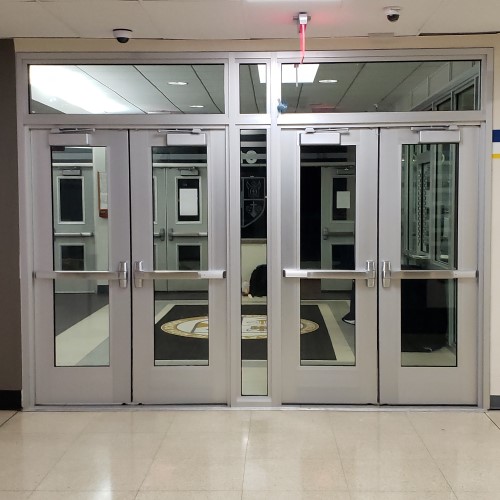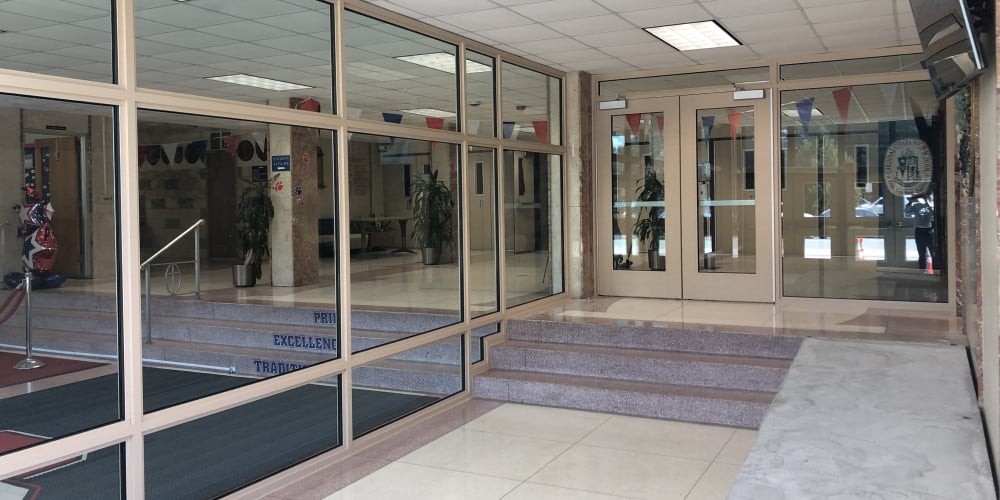Comprehensive, effective security upgrades are often expensive—especially for schools operating on a limited budget. Grants are a practical way to get funding for these projects.
In addition to state and federal grant programs, private foundations often have grant funds available. These are fairly easy to find online, or you can ask your school board association or local ISD for other funding opportunities as well.
Regardless of the grant type, these practical tips should help you set your application up for success.
1. Read the Request for Proposal Guidelines Carefully
Before you begin your application, read and re-read the Request for Proposal (RFP). Make sure everything in the RFP aligns with your goals and expectations. This is about more than just avoiding hurting your chances of winning the grant. It’s about making sure the funding you’re applying for can actually help you achieve your security hardening goals. Details to look for and verify include:
- What is the grant period? If it’s over more than one year, how are the funds distributed?
- How must you report on the funding?
- Can the improvements be permanent additions?
- Must you look for multiple funding sources to cover the project, or can the grant fund the entire project?
2. Apply for Multiple Grants
It’s perfectly acceptable to apply for multiple grants to fund the same project. In fact, some grantors prefer not to be the only source of funding. This is especially helpful if you have a particularly large or complex project that can be easily divided. For example, one source of funding could cover new bulletproof doors, another could cover bulletproof windows.
If you do apply for multiple grants for the same project, make sure you tailor the grant submission copy to each application. It’s an extra step, but little details can make your application stand out.
3. Make Sure Your Priorities Align with the Grantor
If your goals, priorities, and ethos do not align with the grantor’s, it’s unlikely that they will choose to fund your project. This applies to the proposal guidelines in the first tip as well as other factors like region or culture. Look at past funding to get an idea of the types of organizations and schools they want to support. If a Foundation has historically been passionate about private, religious instruction, they might not be a good fit for your public school’s project. For state or federal RFPs, make sure there are no exclusions that would limit your chances of winning the grant.
You'll have the most success if you focus your efforts on opportunities that are a good match for your project, desired updates, and school.

4. Focus on Securing Strategic Areas
When we speak to schools about their projects, we typically recommend that they focus on specific, high-impact areas of the building. Remember, these projects should always align with the funding priorities.
Secure Entry Vestibule
Secure entry vestibules have the double advantage of being a very effective and frequently recommended security best practice. Also called “man traps,” secure vestibules are two sets of secure doors that can be locked, trapping the would-be intruder inside until the authorities arrive. These complex systems are often good projects for funding opportunities with specific requirements (such as permanent additions).
Windows in High-Traffic Locations
We typically suggest adding bullet-resistant exterior windows to high-traffic locations, such as near the main entrances, classrooms that are near entryways or vulnerable points of entry, or the sidelites of offices near the entrance. If you’re not sure what the best use of your grant funding is, let’s talk. We’ve helped schools across the country harden their physical security with bulletproof windows and we’re ready to walk you through the process.
Interior Locking Doors
Your school likely already uses interior doors to section off areas of the school in case of fire. These doors can also be used to keep intruders from entering other wings of the building by making them bullet-resistant. This containment strategy is efficient and effective and can be connected to your silent alarm system.
Vulnerable Classrooms
Vulnerable Classrooms
How you approach classroom security depends largely on your budget. Products to consider adding to the most vulnerable classrooms include bulletproof doors and bulletproof glass in door windows and sidelites. If you choose to ballistically rate some doors and not others, we can match the veneer of the door to make sure they blend seamlessly with the rest of your school’s doors.
Is Film a Viable, Budget-Friendly Bulletproofing Option?
“Security window film” is not bulletproof. When applied to existing school windows, window film will keep the glass from shattering, but it won’t stop a bullet. The best use of window film is in low traffic areas that don’t have people on the other side; we’ve seen film used on school basement windows, which is a great security choice. However, schools should make these choices with a full understanding of film’s limitations. And if your school is in an area that already requires hurricane glass on exterior windows, film won’t add much value to your project.
5. Use Industry Expertise to Bolster Your Proposal
If you have insight, statistics, or guidance from industry experts, don’t hesitate to include it in your proposal. Research and statistics show you’ve done your homework and your proposal is based on sound rationale, making your project a good use of funds.
Protect Your School with TSS
We take school security seriously. If you’re working on a grant proposal and have questions about best practices, budgets, or anything else related to ballistic protection, please don’t hesitate to reach out. Our team of ballistic experts can help you decide what products are right for your facility and the estimated budget for your project. To get started, send us a message. Or, if you want more information about securing a school, download our free school security checklist. We look forward to speaking with you!

